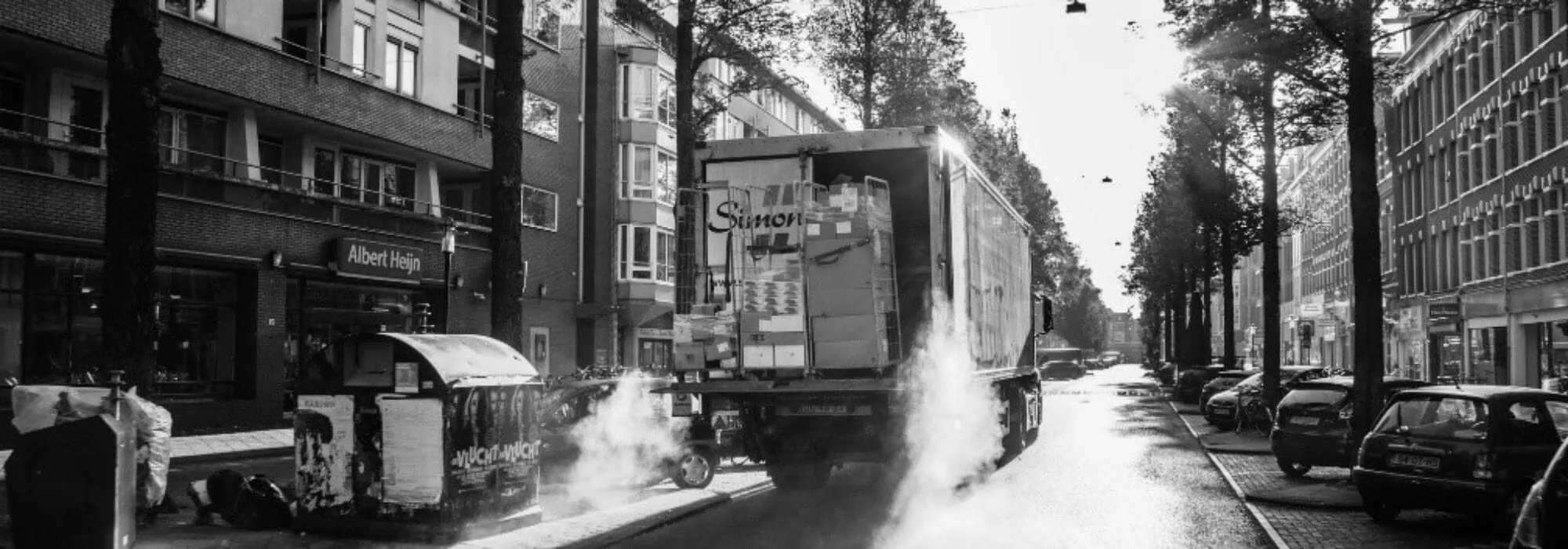
What are the effects of the city wide parking prices increases that were implied in Amsterdam in April 2019? This is the main question that Leonardo Nunes addresses in his master thesis on ’Parking policy: Evidence from Amsterdam’. In order to answer this question, he used transaction data to investigate how these price increases affected parking demand, namely on how long people park, and on how many street parking transactions were avoided. He finds that parking price increases had a modest effect in decreasing parking duration, and a significant effect in decreasing the number of street parking transactions.
For this master thesis, Leonardo Nunes received the Vrije Universiteit Master Thesis Award. The prize was awarded during the VU New Year’s Gala on January 28.
If you are interested in reading the thesis, please send an email.
February, 2021
Detailed summary
This study analyzes the effect of a parking policy change that took place in Amsterdam, 2019 – when hourly prices were increased city wide, by 4% to 100% (60% on average) and with prices increasing by different relative and absolute amounts among parking zones. Using an event study approach, controlling for seasonality, time trends and location fixed effects, and relying on a dataset with more than 30 million parking transactions from 2018 and 2019, this study estimates the policy effect on the intensive and extensive margins of parking, and on parking demand volume. Both the average policy effect and the price elasticity are estimated.
The intensive margin concerns the decision of how long to park, while the extensive margin concerns the decision on whether to park or not. Consequently, the elasticity of the intensive margin defines the marginal change in duration in response to a marginal price increase. While the elasticity of the extensive margin concerns the marginal change in the number of parkers, following a marginal price increase. The price elasticity of the extensive margin of parking is essential to understand how price increases can decrease the number of car trips into the city, and consequently decrease the associated negative externalities. The price elasticity of the extensive margin is also important to understand how prices can decrease the costs associated with cruising, as the external costs associated with cruising, increase as the extensive margin of parking increases.
Curbside parking is ubiquitous in most major cities in the world, as most car trips are preceded and terminated with the act of parking. Curbside parking is still underpriced or unpriced in many urban centers. Parking pricing policies are a highly relevant tool to regulate car travelling inside and into urban, as parking prices can be used to regulate the generalized cost of auto travel. Parking policy is a second-best alternative to road pricing that can be used to decrease traffic congestion, greenhouse gas emissions and air pollution, by either decreasing the number of trips into a city or by reducing cruising for parking.
It is then of interest to understand to what extent pricing changes can affect parking demand, as this has implications on the ability of policymakers to decrease auto travel into urban centers and to decrease cruising for parking, and on the ability to raise revenues by increasing parking prices. Several studies have focused on estimating the price elasticity of parking occupancy and parking demand. While the elasticity of parking occupancy is relevant to understand to what extent price changes can reduce cruising, this elasticity is not so relevant to understand how parking prices affect the number of parkers, and hence trips to urban centers, or how parking prices affect parking duration. Numerous studies have estimated parking price elasticities, but many rely on flawed methodologies or on datasets with strong limitations.
The current paper contributes to the existing literature in several ways. First, this study provides robust estimates of the price elasticity of the intensive and extensive margins of parking, and of parking demand. Second, because the analysis uses transaction data from every parking zone in the city, the study provides a causal estimate of the aggregate effect of city-wide price increases on the intensive and extensive margin of on-street parking, as well as on parking demand. The effect on the extensive margin is especially relevant to evaluate the effect of the policy on the reduction of car trips into the city. Third, the study explores one of the most extensive parking datasets reported in literature to date, by using a method that allows the generation of aggregate data from micro data spanning a large time horizon.